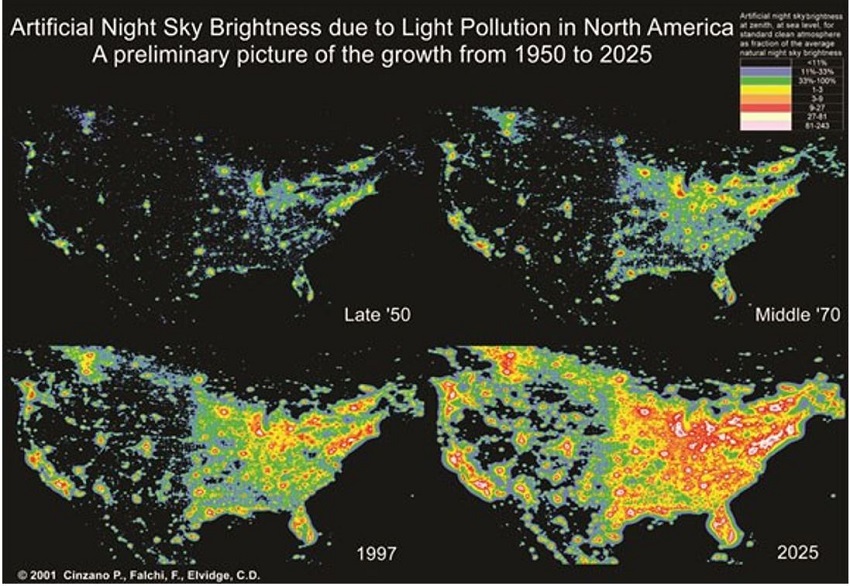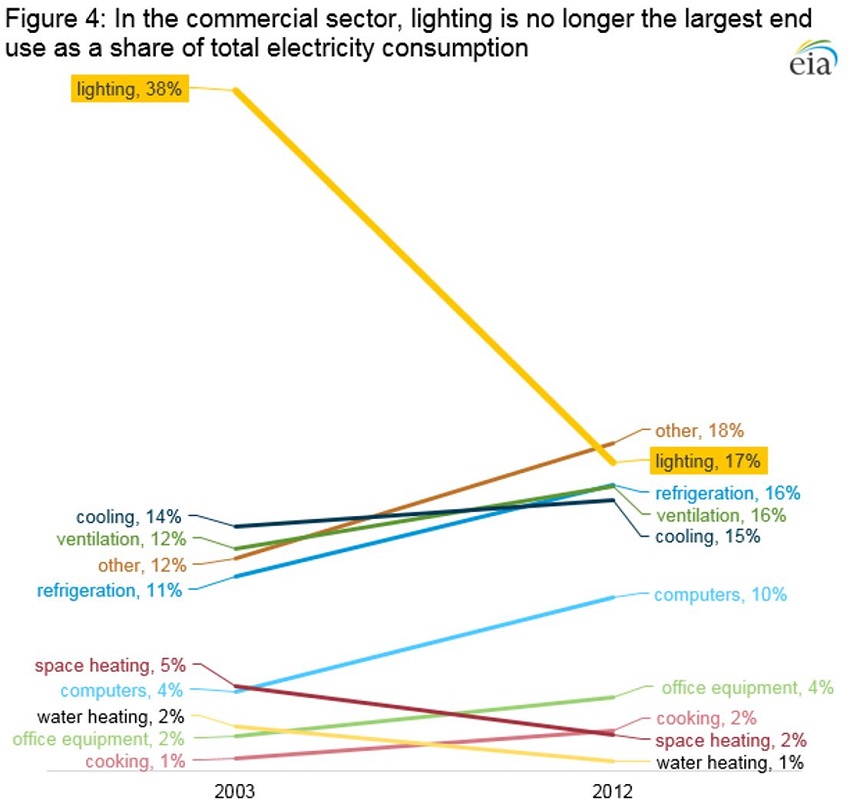|
February 2018
AutomatedBuildings.com
|
[an error occurred while processing this directive]
(Click
Message to Learn More)
|
How Smart Lighting Headaches Are
Delaying IoT for BAS
The reality is that most
lighting control systems are “set and forget”; after initial setup,
additional interaction is not required.
|
 Russ Sharer, Russ Sharer,
Vice President of Global
Marketing and Business
Development
Fulham Co., Inc. |
The Internet of
Things (IoT) offers great promise for building automation. However, in
the rush to address total connectivity, real-world economics tend to
get in the way. While IoT can solve a number of integration and
automation issues, IoT implementation has to overcome market
challenges. This is especially true in the lighting industry, which has
a mature supply and deployment strategy that has been slow to adapt to
new integration solutions such as lighting control, a building block of
IoT. In fact, the luminaires installed today without communications or
sensors won’t likely be IoT capable for the next decade, the lifetime
of the fixture. This delays IoT adoption for lighting at least five to
10 years, which is ironic since building lighting is the perfect
skeleton for IoT.
Lighting as the Skeleton for IoT
Light is everywhere. In fact, in parts of rural India, lighting is the
first thing families add with electrification. In
North America, light
emissions have grown an average of six percent each year between 1946
and 2000, exceeding the population growth rate. Lighting is clearly
essential to any building.

What
makes lighting the right skeleton for IoT is the fact it is not
only essential, but is installed in known fixed locations at regular
spacing intervals. Building lighting connects to a central, stable
power source. It’s also more ubiquitous than any other part of the
electrical infrastructure, including electrical outlets. When you add
sensors and communications (required for IoT) to light fixtures, they
can have the intelligence to detect smoke, bad air quality, even the
sound of a gunshot, and report back to a central location.
Lighting also can be a driver for BAS adoption since it consumes
substantial energy, which means monitoring and conserving the energy
used for lighting can save a lot of money. According to the U.S. Energy
Information Administration, 17 percent of the energy used in commercial
buildings goes to lighting. Between 2003 and 2012, lighting as a share
of overall electricity consumption dropped from 38 percent to 17
percent, largely because of more efficient lighting such as LEDs.


Much
of the LED deployment in the United States has been driven by
rebates from energy companies and cash incentives yielding an immediate
(less than 24 month) payback. What’s more, simply swapping out legacy
lighting for LEDs yields 80 to 90 percent of the energy savings, so
there is no real incentive for adding more savings by including
lighting controls in BAS systems.
However, there is inherent value in connected lighting, especially if
you are looking to adopt IoT. The ubiquitous nature of lighting makes
it the perfect skeleton for IoT. Just as networking companies like
Novell and Hewlett Packard started by connecting PCs, printers, and
file servers, lighting can be a great starting point for IoT
intelligence.
Why Lighting is Holding Back IoT
Unfortunately, having lighting as a ready-made framework for IoT is not
enough. There are too many market and business impediments in the way:
- The distribution channel –
Lighting always has
been part of building construction, and light fixtures make their way
into installations through distributors and contractors, chosen for
lowest cost and ease of installation. If a contractor can come in and
wire the lights quickly, without complexity, the job is less expensive
and the customer is happy. If a contractor has to meet deadlines and
improve profitability on a job, they want to minimize complexity, which
includes taking the time to wire lighting controls into the building
infrastructure.
- Capital expenditures
– How lighting costs are
included in the construction process is another impediment. Lights are
installed as part of the initial construction, so unless the building
owner or tenant is thinking about smart lighting as part of building
automation from the outset, lighting will be specified as a line item
along with the nails and the dry wall. Similarly, tenants tend to
choose lighting based on aesthetics and light intensity, but not on
manageability.
- Rental agreements –
The structure of rental
agreements often calls for tenants to pay for the energy they use. That
means there is no incentive for building owners to pay for an
infrastructure to manage energy consumption. In fact, many commercial
properties don’t even monitor energy use by office or floor, so it
would be impractical to try to reward tenants using lighting upgrades.
- Outdoor lighting –
Just as landlords have little
motivation to install more energy-efficient lighting, there is no
incentive to upgrade and monitor outdoor lighting. Many utilities
charge municipalities by the light pole rather than for actual energy
usage.
- Less commercial construction
– New construction
offers the best hope for IoT-managed lighting, but half of the
commercial space in use in North America is at least 60 years old.
Since 2000, only 7-8 percent of new commercial capacity has been added
per year. Researchers predict that more than half of LED lighting sales
through 2025 will be for building retrofits. So even if all new
building starting wiring for IoT, it would still take half a century
for approximately half of all commercial space to be IoT-ready.
As
you can see, there are a number of market barriers preventing IoT
deployment through smart lighting. Perhaps the biggest is that
retrofitting with LED lighting are a huge energy savings in itself. If
you consider that fluorescent lighting consumes 2 percent of the
world’s energy, and LED retrofits will reduce the power needed for
lighting by as much as 90 percent, most economic incentives can be
achieved with conversion to LEDs.
The Real Issues of Lighting
Management
Historically, building lighting has been installed by the contractor
and when it stops working, you called an electrician. With IoT
controls, lighting becomes part of a more sophisticated infrastructure
that takes more expertise to maintain. If a control system isn’t
working who has responsibility for repairs? If there is a problem with
a wireless connection or controller, is that a problem for IT? Most
facilities managers and IT professionals don’t have the expertise to
include lighting control systems and IoT in their wheelhouse.
In many cases, a system failure would have to be handled by the
manufacturer. Unfortunately, the manufacturer has no direct
relationship with the end user, or even the crew sent to repair the
system. Some vendors are creating training centers for contractors and
installers to address this problem but there is still a gap when it
comes to certification and repairs.
The reality is that most lighting control systems are “set and forget”;
after initial setup, additional interaction is not required. The
lighting control systems either work or they become a problem and are
disabled. In fact, research shows that half of all U.S. lighting
control systems are disabled after 12 months because of unresolved
issues.
Time to Rethink How to Sell
Lighting Control
To help IoT become an accepted platform for smart lighting as part of
building automation, vendors should consider a new approach to selling
and supporting lighting controls.
First, listen to end users and determine how best to incorporate
lighting controls into ROI scenarios. For example, lighting controls
can offer tremendous energy savings when tied to other systems, such as
HVAC. This is a major opportunity for BAS vendors with integrated
lighting control, increasing the return with minimal additional
investment. It would be similar to selling email as part of a
network system; it’s a great value-added service but harder to sell as
a standalone solution. Incorporating lighting controls as part of a
security system, fire and safety, environmental controls, or other
building automation system makes more economic sense for building
managers.
Other ways to think about lighting controls is as part of another
solution, such as item tracking. For example, hospitals tend to buy
more equipment than they need to increase availability; what if the
lighting system could help track the location of all the equipment in
the building?
For IoT to become successful for lighting controls, vendors need to
improve and simplify both the ROI and the installation. As smart
buildings become the goal, it will be easier to make lighting controls
part of the overall infrastructure, opening the door for IoT.
_____________________________________
About
Fulham Co., Inc.
Fulham
manufacturers innovative and energy-efficient lighting sub-systems and
components for lighting manufacturers worldwide.
footer
[an error occurred while processing this directive]
[Click Banner To Learn More]
[Home Page] [The
Automator] [About] [Subscribe
] [Contact
Us]
 Russ Sharer,
Russ Sharer,